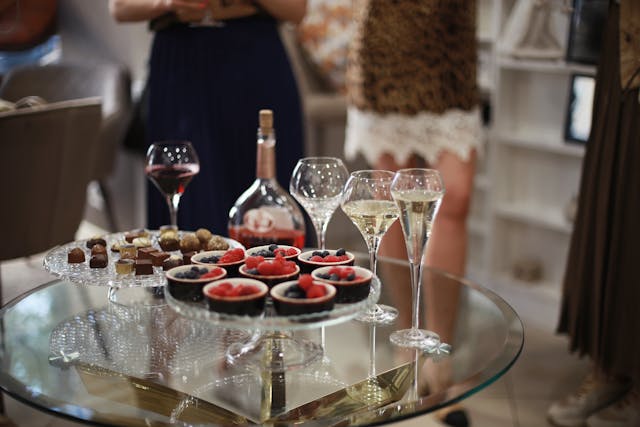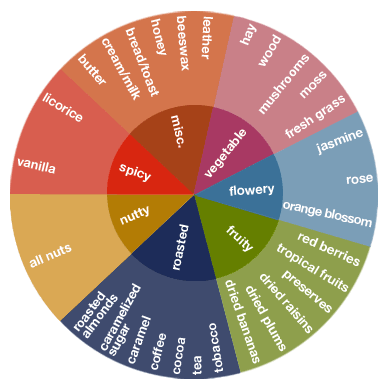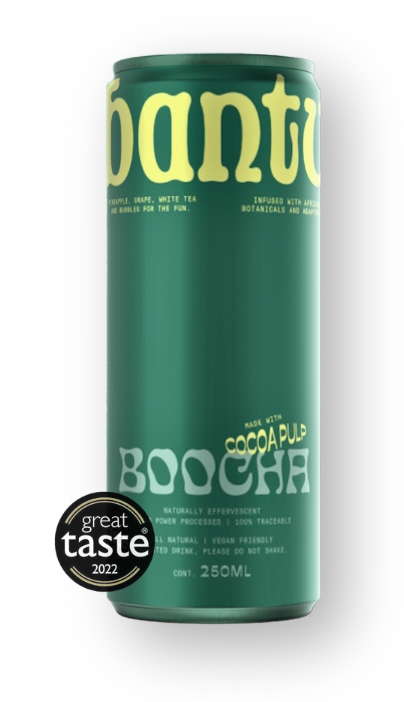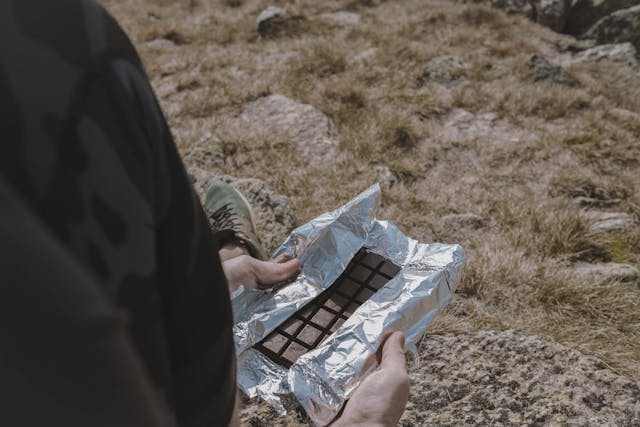
The Bitter Side of Dark Chocolate: Why Some Love It and Some Don’t
October 5, 2024
Corporate Chocolate Gifting Ideas to Appreciate Employees and Delight Clients
December 14, 2024Cacao Supper Club at Home
Guide to Tasting Chocolate, Cacao Tea, and Pulp Juice
Imagine gathering around the table with a few friends (or even random people) for brunch, but it’s not your everyday brunch. Instead, you’re about to go on a sensory journey through the world of diverse cacao flavours. From mouthwatering single-origin artisan chocolates to earthy cacao husk tea to zesty cacao pulp juice, a cacao supper club is the perfect place to discover, delight in, and share your love for the beloved food of the gods with other enthusiasts.
You can host one in your home or join other choco lovers at a coffee shop-styled supper club around you.
This article explores the different cacao products you can taste at a supper club, along with tips on successfully hosting an unforgettable cacao tasting party at home. You’ll also learn why cacao has such a diverse flavour profile and why you should choose ethical products for your cacao supper club.
Different Forms of Cacao You Can Taste at a Cacao Supper Club
- Chocolate bars
There’s really no right or wrong way to taste chocolate in terms of themes. It all comes down to what your menu wants to explore that day. Your menu can include different types of chocolate bars, so you can tell the big and subtle differences between dark, milk, and white chocolate. And, you can expand or narrow your party theme around cacao bean origin, cacao species, cacao percentages, different brands. The options are many.
- Cacao Pulp Juice
Cacao pulp juice is extracted from the white pulp surrounding the cacao beans. This offers a unique taste experience not found inside the bean. You can find it as a standalone drink or as an addition in other beverages.
SEE ALSO: Cacao Pulp Juice Kombucha
- Cacao Husk Tea
Also known as cacao tea, cacao husk tea is a brew from the shells of the cacao bean. Some products may contain cacao nibs.
- Cacao Nibs
Cacao nibs are roasted and cracked cacao beans that have had their shell removed. As such, their taste can be intense, though the flavour will depend on how long the beans were roasted.
- Chocolate Spread
Chocolate spreads are blends of cacao and other ingredients to create creamy, rich toppings for toast and fruit, or for baking.
Steps to Hosting a Successful Cacao Tasting Party at Home
Knowing what to do before and during a cacao tasting party will help you give your guests an experience they won’t forget soon.
Step 1: Define Your Party Theme
A clear theme guides you in selecting products and writing down tasting instructions.
- Are you tasting for terroir? Then you may consider single-origin cacao products from one region, or single-origin products from different The second option is better in appreciating the differences between origins.
- Tasting for bean varieties? Think fine flavour cacao vs. mass cacao. Look for products across the three major bean species—Criollo, Trinitario, and Forastero.
- Tasting for cacao bitterness? Then dark chocolate with varying cacao percentages will do.
Step 2: Plan Logistics and Order Products in Advance
Get the details right so you don’t meet unexpected needs during the tasting session.
- Determine the number of guests, schedule a suitable time, send out invitations and collect advance pay. Keep your guest list short for a more intimate experience. A suitable time is when your guests are not unlikely to be hungry, so the tasting is not rushed.
- Choose plain chocolates, preferably artisanal chocolate to avoid artificial flavours, like vanilla, that mask the authentic cacao flavours. You can as well order the other cacao products like husk tea bags and pulp juice from the same artisan if they produce those.
- Know your guests’ preferences and dietary restrictions to avoid potential allergies or intolerances to nuts or other inclusions in chocolates.
Step 3: Setting Up for Tasting
You can host a cacao tasting party in your kitchen or in the living room. Only make sure to set up your environment to remove all obstacles to a thrilling experience.
- Limit sensory distractions like noise, bright lights, and strong scents.
- Get your palate cleansers ready. Experts recommend bread, unflavoured crackers, apples, and sparkling water.
- Write down tasting instructions so each participant can follow the same procedure. Also get pens and papers for notes taking.
- Print chocolate flavour wheels to accompany the tasting instructions. This will help participants better describe the flavours during tasting.
- When sending out invitations, inform guests to avoid strong flavoured foods 30 minutes before tasting time.
Step 4 (optional): Consider an After-Tasting Meal
You’re hosting a cacao-centric supper club, so there’s no forbidding adding other food items or meals on your menu for the after-tasting session. Savoury or sweet recipes, or both, that’s your call.
Benefits of Hosting or Joining Cacao Supper Clubs
Cacao supper clubs offer social benefits besides appreciating cacao flavours, sometimes under the watch of an experienced chocolate taster. You get to connect with other cacao enthusiasts and the discussions can help advocate for ethical practices within the chocolate industry. For example, you can discuss on ethical sourcing, fair-trade, farmer income, child labour, and eco-friendly cacao farming.
If you’re hosting, you can choose to support sustainable initiatives with the proceeds you make.
How to find a cacao supper club? You can do local searches on Google or on social media. Search for ‘cacao supper club near me’ or ‘cacao tasting events near me’. You can also put the name of a particular city. ‘Cacao supper clubs in London’ or ‘New York’. Offline, you can ask about cacao events in coffee shops and cafes.
How to Properly Taste Chocolate and Other Cacao Products to Unlock Flavours
Cacao has over 400 identified flavours. These flavours are a combination of bean species, soil, and climate. And even more interesting, flavour can vary between batches of beans from the same species and region, and from one batch of chocolate to another. These variations make cacao tasting a fun discovery experience.
A chocolate flavour wheel is a guide you can use during tasting to describe the flavours you’re noticing. It is not exhaustive (remember cacao has over 400 identified flavour notes).
By following expert tips, you can unlock as many flavours as possible. Knowing what to expect during tasting will also help you create tasting instructions for your guests.
Tasting Chocolate Step-by-Step
Experts recommend a basic procedure in appreciating and tasting chocolate, whether you’re tasting chocolate at home alone or at a supper club.
- Inspect the appearance of the chocolate.
- Smell and listen to the chocolate.
- Feel the chocolate in your mouth.
- Cleanse your palate with sparkling water, bread, or apple before tasting again.
Each step is a detailed process.
Step 1: Inspect the appearance
The appearance of your chocolate says much about its quality.
Colour should be smooth throughout the chocolate bar, even on broken edges. Shades of colour in the same bar can indicate poor mixing.
The colour of dark chocolate depends on its cacao percentage and can range from medium brown (30-60% cocoa) to rich dark brown (70-90% cocoa) to almost dark (90% and above). Milk chocolate is light golden brown to medium brown. White chocolate is ivory or pale yellow. If toasted, white chocolate should appear light brown like caramel.
Texture. A fine gloss indicates proper tempering and storage while a dusty, unappealing appearance indicates bloom from poor tempering or storage.
- Smell and listen to the chocolate
Here you’re inspecting two aspects of the chocolate bar: aroma and sound (snap).
Aroma: cup the chocolate in your hands and hold it close to your nose, then sniff slowly, taking note of the smell. Is it fruity, floral, nutty, or earthy? Is it intense or light? For milk chocolate and white chocolate, you’ll also sniff notes of milk, cream, or caramel.
Sound: gently break the chocolate to appreciate its cocoa butter characteristics. Does it snap crisply or is it dusty or somewhat soppy? There are several reasons for a poor chocolate snap: insufficient cocoa butter, poorly ground chocolate, inadequate tempering, and poor storage. Milk chocolate and white chocolate do not snap as cleanly as dark chocolate. This is due to milk fats and solids.
- Taste and feel the chocolate in your mouth
Place a piece of chocolate against the roof of your mouth and hold it there with your tongue. As the chocolate slowly melts and spreads around your mouth, note how it tastes. Is it fruity? What type of fruit? Is it nutty? Like what nut? Is it earthy? Use your flavour wheel to guide your taste descriptions.
Also note how the melting chocolate feels (texture). Is it smooth or gritty? Velvety or waxy and greasy? A waxy mouthfeel may indicate fake chocolate made with cocoa butter substitutes. It’s important to know the brand you’re getting your tasting chocolate from.
Lastly, swallow the melted chocolate and note the lingering flavours. Are they short-lived or long-lasting? As you swallow, do the flavour characteristics change or do they stay the same?
- Discuss your findings. Then cleanse your palate and taste the next product
Cleanse your palate each time you’re done tasting a product before moving on to the next. The next product can be another chocolate or a different cacao product.
If your theme included different types of chocolate or single origin chocolates from different regions, repeat these steps while noting the differences between the products.
Sensory differences in cacao products
Comparing dark chocolate and milk chocolate helps you tell the difference milk fats and solids bring to chocolate. Dark chocolate vs. white chocolate helps you appreciate the contribution of the various cocoa solids.
Chocolate of the same species and origin but from different brands may tell you about the manufacturer’s touch.
Different single-origin chocolates shed light on the contribution of terroir and cacao bean specie to the final flavour. Criollo and Trinitario species give off deeper and more complex fruity and floral flavours while Forastero tends to give earthy flavours.
Tasting Cacao Pulp Juice
Don’t expect chocolate flavours from cacao pulp juice! While other eatable cacao products come from inside the bean, cacao juice comes from the pulp outside the bean.
You can taste cacao juice in its natural form or compare it with another beverage enhanced with cacao juice. A great example will be our cacao juice enriched kombucha, Boocha.
Inspect its colour
Pour some cacao juice into a transparent glass and observe the colour. Natural cacao pulp juice should be a pale yellow or cloudy white. Concentrates are brown like caramel, but it’s unlikely you’ll get that from a shop.
Savour its taste and mouthfeel
Get about a tablespoon of the juice into your mouth and hold it for some seconds. You can also gently swirl it, so it touches more tastes buds. Note the flavours in terms of taste, aroma, and mouthfeel. Is it fruity and refreshing? What type of fruit does it taste like?
Cacao pulp juice is naturally sweet and tart (no need for added sugar), with a marked fruity aroma. You may notice hints of passion fruit, mango, pineapple, lychee, yuzu, peach, pear, and honey. These potential diverse scents make for a wonderful experience in a tasting party to see what each participant reports. Remember no two palates are the same!
You can even cleanse your palate and taste again to see what other flavour notes you can discover.
How to Taste Cacao Husks/Nib Tea
You can get pure cacao husks or cacao husk with bits of nibs. With nibs, expect a more intense colour and flavour.
Prepare the perfect brew
How you brew your cacao husk tea will determine the intensity of the flavours you experience.
- Use pure cacao husks or husks with bits of nibs (nibs intensify colour and flavour).
- Steep 1-2 teaspoons (or even more) of cacao husks in hot water for at least 5 minutes.
- To appreciate the tea’s pure flavour, don’t add sugar.
Evaluate the flavour
- Take your cup of hot brew closer to your nose, sniff the vapour and note the scent. You may notice earthy, herbal, or subtle chocolate smells. Mildly bitter if containing nibs.
- Then sip, hold, and swirl the tea in your mouth to distribute flavours evenly.
Compare flavour variations
- After cleansing your palate, you can add sugar or cream to your tea to taste the impact of added ingredients.
- You can also compare the flavours of cacao tea to coffee or black/green tea. Cacao tea is caffeine-free, one reason why it’s not as bitter as coffee.
Why Cacao Taste the Way it Does
Why is there so much variety in cacao flavours?
Cacao and chocolate tastes depend on 4 factors: cocoa bean variety, terroir, and post-harvest fermentation, and processing.
Cacao variety
Different species offer unique flavour profiles. Criollo and Trinitario give off more delicate fruity and floral notes while Forastero has deep earthy and nutty flavours.
Terroir or environment
Soil, temperature, humidity, and sunlight exposure all impact cocoa bean flavour, which also explains regional differences in cacao products.
| Region | Cacao variety | Common flavours notes |
| Latin America | Criollo, Trinitario | Fruity, floral, bright citrus, nutty, honey, caramel |
| Africa | Forastero | Deep, robust, earthy, nutty, bold, slightly bitter |
| Asia | Trinitario, Criollo | Spicy, woody, tropical fruit, nutty, earthy, smoky |
Even in the same region, it is still common to notice subtle differences among cocoa beans. For example, in Cameroon where we farm our cacao, volcanic soil gives an added complexity, resulting in spicy, mildly fruity notes to Trinitario and Criollo. The major differences, though, are the result of fermentation techniques.
Cacao Bean Fermentation and processing
Cacao beans need to be fermented at the right temperature for the right duration, usually 5-7 days, to kickstart chocolate flavour development. But length of fermentation also depends on cacao variety and farming region. In West Africa, where over 70% of the world’s cocoa is produced, production tends to be standardized with fast fermentation and drying under the sun. In other regions, fermentation and drying methods vary.
After drying, cacao beans are then roasted and shelled, and used in making different products like chocolate, cacao powder, husk/nib tea. Roasting, grinding, and mixing techniques influence flavour profiles.
Reasons to Choose Ethical Cacao for Tasting (how ethical farming enhance flavour)
ethical cacao farming does not directly enhance flavour, but it creates a conducive environment for optimal flavour development. This is through
- healthy soil
- minimal or no chemical use
- biodiversity preservation, and
- best post-harvest processing techniques.
Other reasons to choose ethical products include supporting farmers and farm workers to earn a decent income and helping preserve the environment.
READ ALSO: Beyond Fairtrade: How Our Ethical Model Benefits the Farm Worker, Environment, and Consumer
Takeaways
A cacao supper club is the perfect place to discover, delight in, and share your love for cacao with other enthusiasts. You can host a club in your home or join one around you.
To host a successful cacao tasting party:
- Define your party theme, for example, around type of chocolate, origin, specie, cacao percentage, or different brands.
- Plan logistics and order products in advance.
- Set up a sensory-friendly environment.
- Use a chocolate flavour wheel to describe tastes.
And also important, choose ethical cacao products!
FAQs
Are supper clubs legal?
Supper clubs are legal in the US, though specific requirements vary by state. In the UK, you must register and get checked for hygiene standards before you can operate a supper club.
How can I be good at tasting chocolate?
Practice makes perfect. Taste chocolate as often as possible to train your eyes, nose, and palate to appreciate chocolate and differences between brands. Learn how cocoa origins and processing methods influence flavour profiles. Record your findings in a tasting journal to track your experiences.
If you desire to become a professional taster, it’s essential to seek the guidance of experienced tasters.
How do you do a proper chocolate tasting?
There are 6 expert steps to tasting chocolate properly:
- Look: colour and appearance
- Snap: sound of breaking
- Aroma: scent evaluation
- Taste: flavour experience
- Texture: appearance and mouthfeel
- Finish: lingering flavours
References
https://chrystinanoel.com/blog/how-to-host-a-chocolate-tasting-party-at-home
https://www.ghirardelli.com/how-to-taste-chocolate
https://sampriestley.com/start-a-supper-club/
https://www.residenturbanist.com/p/home-based-supper-clubs-are-legal
Chocolate Extinction: Fact vs. Fiction + What Chocolate Lovers Can Do
Chocolate ExtinctionFact vs. Fiction, What Consumers Can Do Share On Facebook Twitter Email Is the world really running out of chocolate? Not really. Currently the global […]
Corporate Chocolate Gifting Ideas to Appreciate Employees and Delight Clients
Corporate Chocolate GiftingHow to Appreciate Employees & Delight Clients Share On Facebook Twitter Email When it comes to corporate gifting, a one-gift-fits-all approach just doesn't cut […]
The Bitter Side of Dark Chocolate: Why Some Love It and Some Don’t
The demand for dark chocolate continues to grow, due partly to the growing awareness of its health benefits. But while some consumers rave and swear by its rich, velvety goodness, others scrunch up their faces.





